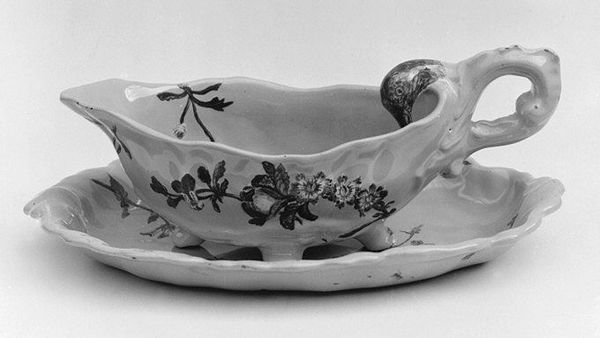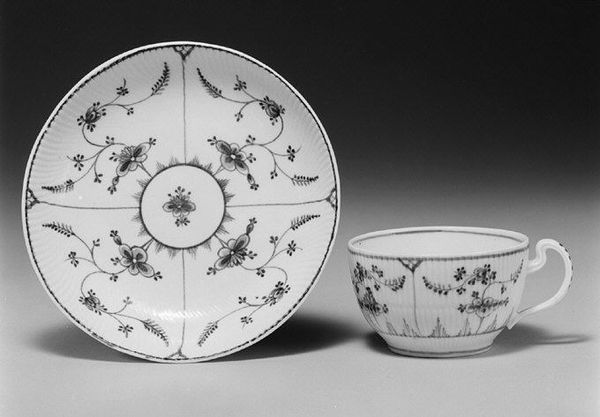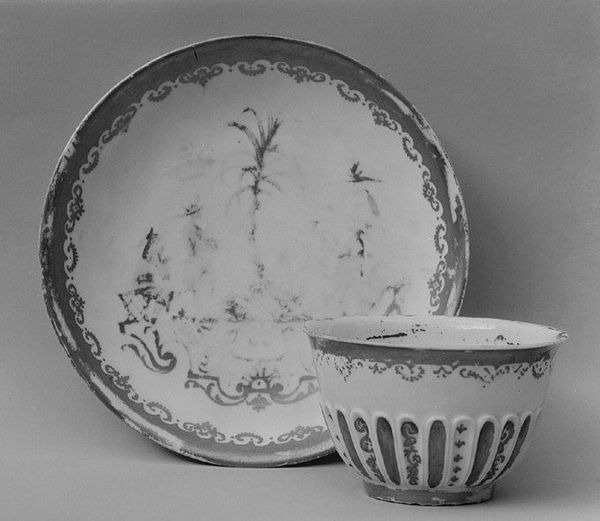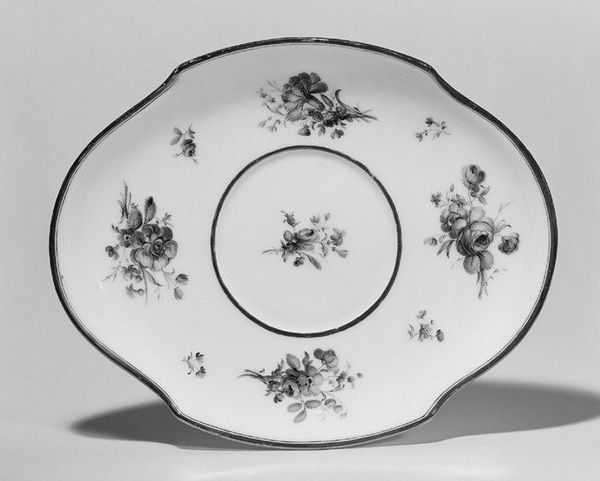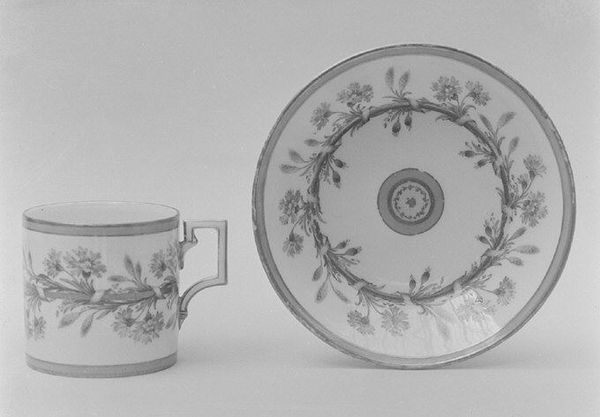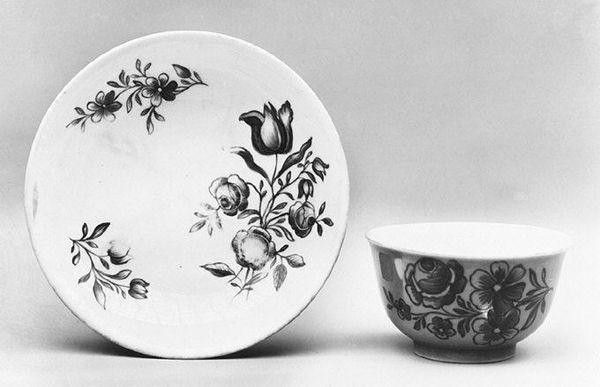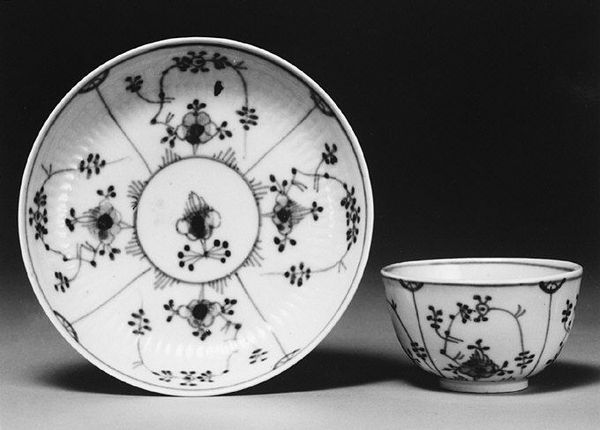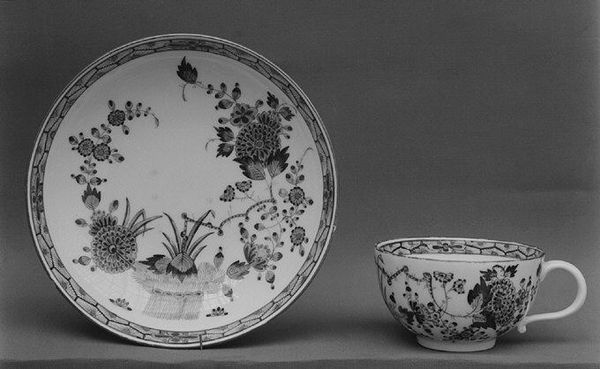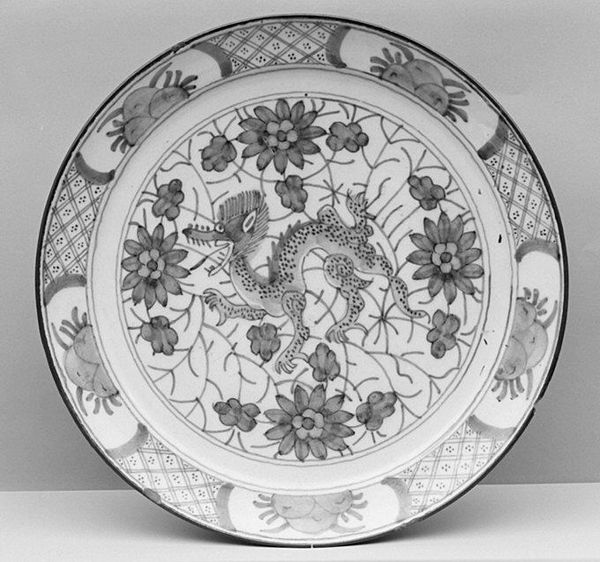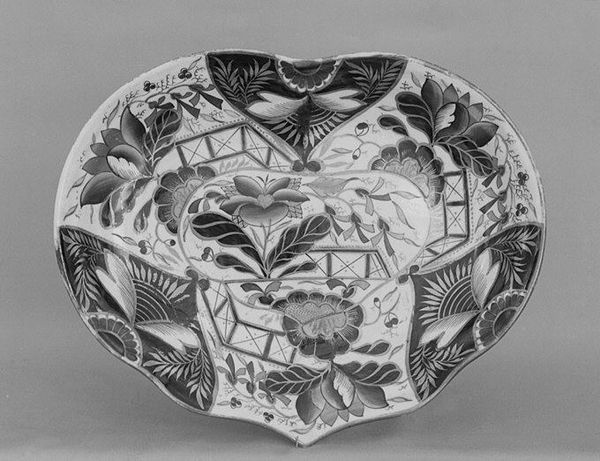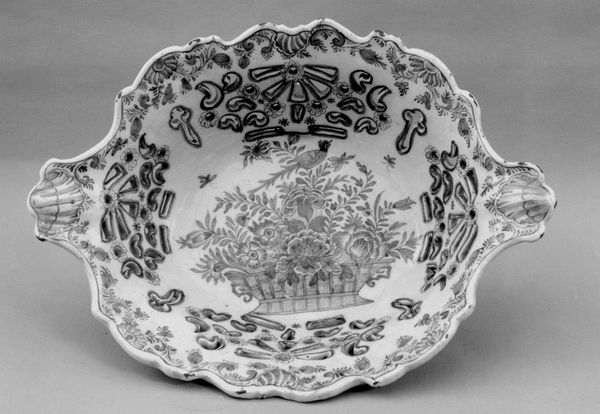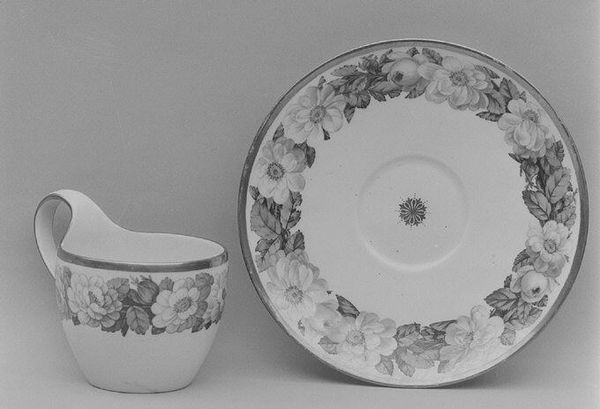
ceramic, sculpture
#
asian-art
#
ceramic
#
japan
#
sculpture
Dimensions: H. 3 1/4 in. (8.3 cm); W. sq. 5 3/4 in. (14.6 cm)
Copyright: Public Domain
Editor: So, this ceramic bowl by Eiraku Hozen, dating back to 1800, is truly striking! I am immediately drawn to the intricate designs, especially those stylized lions swirling around what appear to be clouds. How would you interpret this piece? Curator: This bowl offers a glimpse into the complex interplay of power, representation, and cultural exchange in 19th-century Japan. Those "lions" are likely depictions of Shishi, or guardian figures often placed at entrances to temples and sacred spaces, symbolically guarding against evil and misfortune. Considering its creation period, where does the bowl situate itself amidst Japan’s evolving socio-political landscape, particularly in relation to trade and cultural exchanges with other nations? Editor: That is an insightful connection, indeed! How would the placement of guardian figures onto everyday objects influence one’s interpretation? Curator: Their presence on something as quotidian as a bowl transforms it into more than just a functional object. It becomes imbued with a sense of protection, prosperity, and perhaps even a subtle assertion of cultural identity amidst growing foreign influence. Notice the material as well: The craftsmanship speaks to the legacy of ceramics as a highly prized art form in Japan. How can we, even now, reconcile these artistic practices to contemporary dialogues concerning cultural preservation, artistic authenticity, and globalization? Editor: Fascinating! Seeing it through that lens really adds depth to my understanding. Thanks for shedding light on that. Curator: Absolutely! It's these layered interpretations that keep art history so relevant. The bowl then becomes a canvas for discussing socio-cultural tensions.
Comments
No comments
Be the first to comment and join the conversation on the ultimate creative platform.
